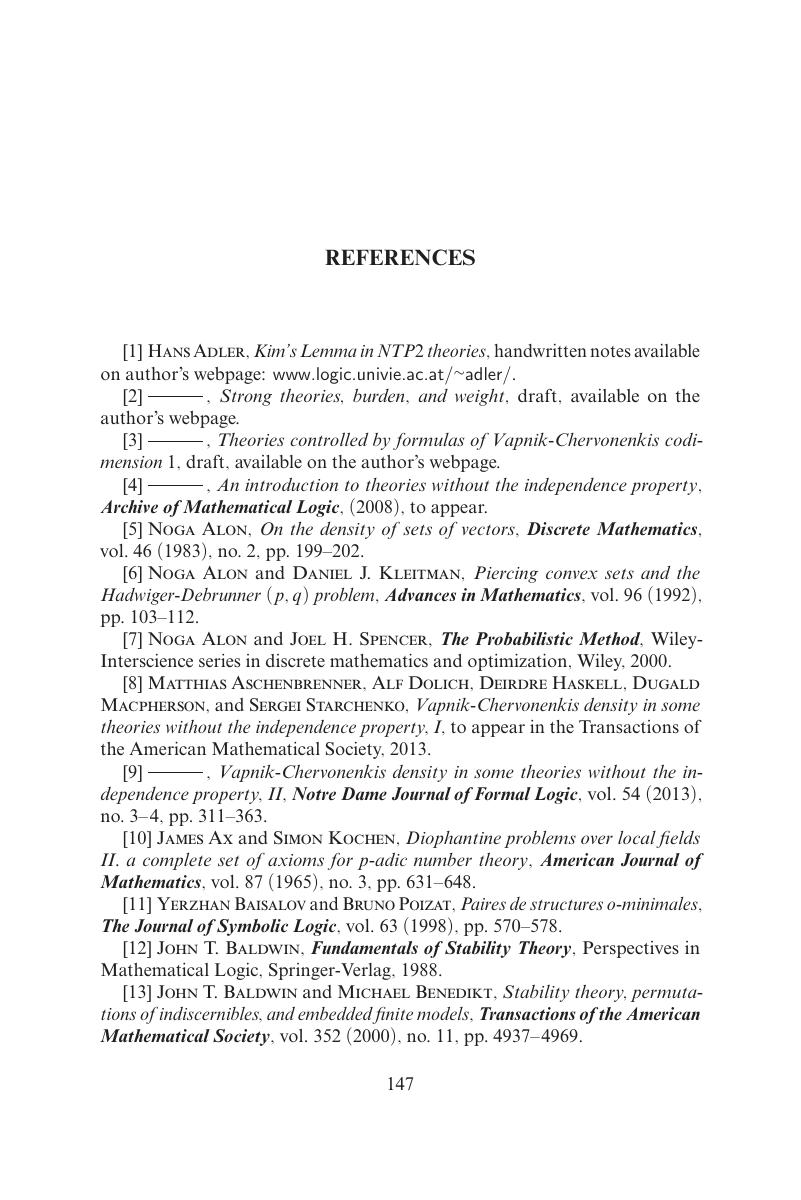Book contents
- Frontmatter
- Contents
- CHAPTER 1 INTRODUCTION
- CHAPTER 2 THE NIP PROPERTY AND INVARIANT TYPES
- CHAPTER 3 HONEST DEFINITIONS AND APPLICATIONS
- CHAPTER 4 STRONG DEPENDENCE AND DP-RANKS
- CHAPTER 5 FORKING
- CHAPTER 6 FINITE COMBINATORICS
- CHAPTER 7 MEASURES
- CHAPTER 8 DEFINABLY AMENABLE GROUPS
- CHAPTER 9 DISTALITY
- APPENDIX A EXAMPLES OF NIP STRUCTURES
- APPENDIX B PROBABILITY THEORY
- REFERENCES
- INDEX
- References
REFERENCES
Published online by Cambridge University Press: 05 July 2015
- Frontmatter
- Contents
- CHAPTER 1 INTRODUCTION
- CHAPTER 2 THE NIP PROPERTY AND INVARIANT TYPES
- CHAPTER 3 HONEST DEFINITIONS AND APPLICATIONS
- CHAPTER 4 STRONG DEPENDENCE AND DP-RANKS
- CHAPTER 5 FORKING
- CHAPTER 6 FINITE COMBINATORICS
- CHAPTER 7 MEASURES
- CHAPTER 8 DEFINABLY AMENABLE GROUPS
- CHAPTER 9 DISTALITY
- APPENDIX A EXAMPLES OF NIP STRUCTURES
- APPENDIX B PROBABILITY THEORY
- REFERENCES
- INDEX
- References
Summary

Information
- Type
- Chapter
- Information
- A Guide to NIP Theories , pp. 147 - 154Publisher: Cambridge University PressPrint publication year: 2015
